
The Montecristi Foundation, Inc.: A non-profit, private operating foundation.
Our mission is to preserve, and to re-grow, the centuries-old art of hand-weaving the legendary Montecristi “Panama” hats.
Salud. Comida. Arte. Health. Food. Art.
“To save the art, first we must save the artists.”
We are but a match in a hurricane. We do a little bit in a little village. We make a few lives a little better, once in a while. It’s not much, but it’s something. Perhaps, after seeing what we are doing now, you will decide to help us do a little more.
Funding for Foundation projects and programs has come from The Panama Hat Co. of the Pacific, Inc. and from sales of Montecristi hats of $5000 and up. Profits from those hat sales were repatriated back to the weaving community in the form of free medical care and other programs of the Foundation. Currently, the Foundation also receives direct donations from people like you (hint, hint).
Specific programs funded and administered by The Montecristi Foundation, Inc.:
Medical Care top
When we first began to provide free medical care to the village of Pile nearly a decade ago, ours was the only medical care available in the village. The government of Ecuador had not yet “discovered” Pile. We started with a couple of experimental medical days, funded by The Panama Hat Co. of the Pacific, Inc.
A physician from Montecristi city brought two assistants and his best guess as to what medications might be needed. They gave physical examinations, listened to complaints and symptoms, prescribed medications when appropriate, and advised patients on basic health maintenance, diet, etc. (mostly ignored, same as I do).
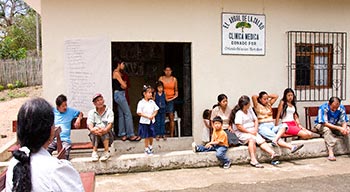
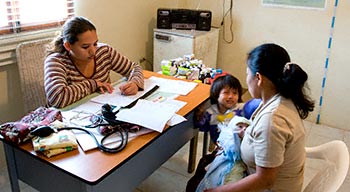
These free medical days were so popular with the weavers and their families (not a surprise) that we continued the program. We funded free medical days in Pile several times per year, as many as we could afford.
The Foundation was created, incorporated, and approved by the IRS during this period.
We have provided several “doctor days” each year for Pile, from our inauspicious beginnings nearly a decade ago up through 2007.
We will continue to do our best to provide medical help for the village of Pile. The government of Ecuador has finally discovered the village, and assigns a physician just out of school to provide care for Pile on a regular schedule. So we plan to modify our own program to provide the most help possible within our small budget.
Safety Masks for Weavers top
The Montecristi Foundation, Inc. ( MCF ) has provided free safety masks to the weavers of Pile. This is the first time in history that the weavers have had any way to protect themselves from the potentially hazardous sulfur fumes that are an essential part of the process.
Sulfur powder is critically important to the traditional process of creating genuine Montecristi hats. We routinely provide free sulfur powder to the weavers of Pile. I bought a safety mask for Gabriel to wear while dispensing sulfur in Pile. He also wears it when he uses burning sulfur to bleach and fumigate the hats he is preparing for export to me. He and I agreed that the weavers also needed safety masks to protect their lungs from the caustic sulfur fumes when they are bleaching their straw and their hats.
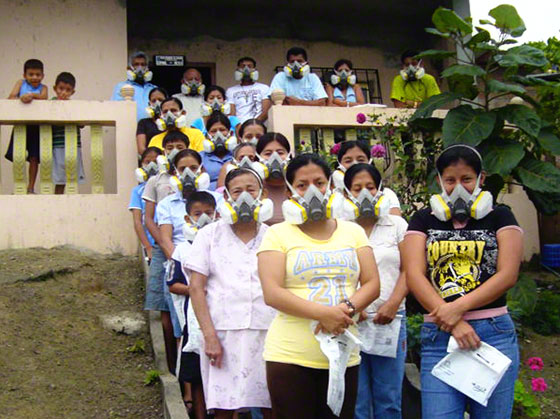
As the foundation continues to receive contributions from donors like you, we will expand the program to buy safety masks for the weavers of El Aromo and Las Pampas. A $50 contribution buys a new safety mask.
Public Health Cooperative
In addition to the physician assigned to Pile, there is a midwife, a nurse who can give injections and IVs, and a layperson elected by the civic cooperative to be responsible for health-related issues and projects (translation: paperwork). We are bringing these people together for the first time, to get to know each other and to work toward common goals. (Kind of funny, in a way, that someone from 6000 miles away is bringing together people who all work within a half-mile radius. Sometimes, it takes a different point of view to see the obvious.)
We are also recruiting volunteers from the village to visit patients daily to remind them to take their medications and to watch them do it.
(Who do you think volunteers?
- Men
- Women
- Both
Answer: B!)
It is common practice in Pile not to take medications even when they have them. I think, mostly, it’s a problem of illiteracy, lack of watches, unclear understanding of what they are supposed to do, etc. We’re trying to do anything we can think of to increase the odds from near zero to about 90%. It’s not easy to change the way people do, or don’t do, things.
Eye Glasses
The Foundation brought an optometrist to Pile, provided free eye exams, and free eyeglasses. I was there when the optometrist came, and I was shocked to discover that most of the weavers literally couldn’t see what they were doing. I had high hopes that a dramatic increase in fineness and evenness of weave would follow immediately. I was wrong. Touch and feel must be more important than sight when weaving. (See related story about a child’s eye glasses).
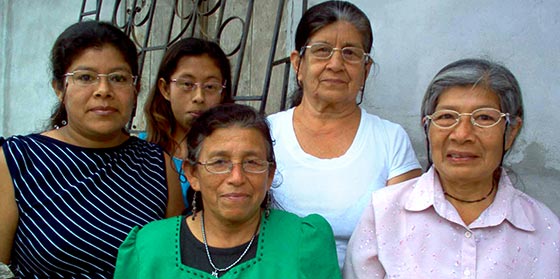
Blood Lab Tests
To you and me, this seems like no big deal. To the weavers and their families in Pile, this was a first-ever opportunity. The physician collected blood samples and sent them to a lab in Manta for analysis. Physicians treating weavers and their families now have a new diagnostic tool available and a baseline record for their files. The government medical service does not include this. The TV crew from CBS News was in Pile on the day we were drawing blood. See CBS video.
Water Purification and Storage System
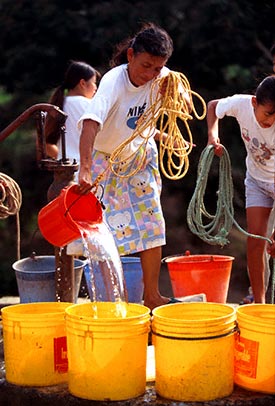
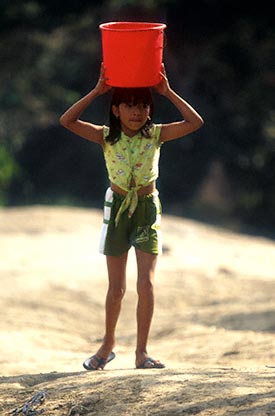
We have been asked to fund this very important public project for the village of Pile. The MCF hired an architect to select the best site, to make a drawing of the proposed system, and to provide an estimate of costs. (The drawing and proposal are completed and are available for your examination should you wish to help fund the project.)
We have received a heroic pledge of monetary support from Steve Singer, President of Hartford York. Steve and Hartford York have always been great supporters of MCF efforts to preserve the art of Montecristi hats. Thanks, Steve.
Great start. The hat company happily matched Steve’s generous donation. We still need another $6000.
Jorge and I met (11/07) with the president of the rotary club in Manta. He was very enthusiastic about the project and pledged the help and support of the club. Brilliant!
So this project is off to a spectacular start. We just need to raise a little more money. Hint, hint.
So how much would you pay NOT to have dysentery? A hundred dollars? Two? Five? A thousand? Fair enough. Now go pay that amount on behalf of one of the weavers and keep him/her weaving instead of sitting around in an outhouse. Thank you. Muchas gracias. Mahalo.
Denomination of Origin protection for “Montecristi” Hats
This is one of our most important projects ever. We are working, successfully, to give legal protection to “Montecristi” hats in the same way “Bordeaux” and “Champagne” wines, “Idaho” potatoes, “Jamaica Blue Mountain” coffee, and other regional produce and products are protected. The MCF and The Panama Hat Company of the Pacific, Inc. have funded, for several years, legal action in Ecuador, to win Denomination of Origin protection for Montecristi hats.
The application was filed in the name of the Asociación de Artesanos de Montecristi.
The World Intellectual Property Organization (WIPO) of the UN oversees, globally, Denomination of Origin applications. When we made our application, WIPO sent an inspector to Montecristi to evaluate the merits of the application on behalf of “Montecristi” hats. The UN inspector from WIPO endorsed our application for DO protection, meaning that he endorsed our assertion that both process and product of “Montecristi” hats are unique and proprietary to the area.
Once our application was blessed by WIPO, the IEPI of Ecuador (a governmental agency of Ecuador that regulates and protects intellectual property rights) conducted two similar inspections to verify the unique process employed to cut, prepare, and weave the straw to create Montecristi hats. The IEPI awarded Denomination of Origin status to “Montecristi” hats in 2007.
Several appeals trying to block the DO protection already have been defeated. The most significant is from the Cuenca exporters and has not yet been resolved (January 2008). The two largest, and oldest, exporters in Cuenca both support the position and actions of the MCF on behalf of the Montecristi weavers. Muchas gracias to Alberto Dorfzaun of K. Dorfzaun and to Fernando Moreno of Serrano Hat, for doing the right thing. “Hats off” to both of you.
In my opinion, one of the most important factors killing off the art of fine hat weaving in Montecristi during the past couple of decades has been a practice common among Cuenca hat exporters of selling Cuenca hats and misrepresenting them to be Montecristi hats. Buyers in Europe, Asia, and the US prefer to pay lower prices for Cuenca hats and then to demand that the Cuenca sellers “document” them to be Montecristi hats. The consumers who buy the hats believe they are buying Montecristi hats and do not know how to detect the fraud.
Consumers want to buy Montecristi hats. They go shopping and buy a hat that is represented to be a Montecristi hat, but it is not really a Montecristi hat. The market demand for Montecristi hats is, more often than not, satisfied with hats that are not really Montecristi hats.
The practice of selling Cuenca hats misrepresented to be Montecristi hats is very bad for the weavers of genuine Montecristi hats.
First, the lower-priced Cuenca hats gobble up the market, stealing sales from the higher-priced Montecristi hats, leaving the weavers of Montecristi hats with very little market for their work.
Second, consumers buying Cuenca hats misrepresented to be Montecristi hats are not especially impressed with the fineness and quality of the “counterfeit” Montecristi hats. They do not understand why Montecristi hats have such a high reputation. Even the finest Cuenca hat does not have the same oh-my-god-look-at-this effect as a fine Montecristi hat. Someone buying a Cuenca hat, believing it to be a Montecristi hat, might very well think “I don’t get it. What’s all the fuss about?” This reaction then lowers the reputation and perceived value of Montecristi hats, again damaging the market for genuine Montecristi hats.
Cuenca exporters must be stopped from selling local hats by misrepresenting them to be Montecristi hats. Then the demand for genuine Montecirsti hats will increase dramatically. Demand will exceed supply. Prices paid for hats will increase. If prices paid to weavers increase enough, then I hope weavers will leave the tuna canneries, will leave their jobs in Venezuela and Spain to come home to their families, to come back to weaving fine Montecristi hats.
Seeking official Denomination of Origin protection for “Montecristi” hats has been a special project, one I believe to be critically important to increase the odds that the art of Montecristi hats may survive another generation.
This is something that needs to be done because it is the right thing to do. This is for the weavers. This is for everyone who creates, sells, buys, and wears genuine Montecristi hats, now and a hundred years from now. The unique traditional process of making Montecristi hats needs to be well documented, and only hats made by that process within the canton of Montecristi should be sold as Montecristi hats. No substitutes, no fakes—a Montecristi hat really should be a genuine Montecristi hat and should be certified as such.
Securing DO protection for Montecristi hats should help to raise consumer confidence, thus increasing sales, thus increasing demand, thus increasing supply, thus saving the art. Well, that’s my plan. Sure hope it works.
Ascociación de Reales Productores de Sombreros Montecristi
When the DO protection becomes final and real and in effect, then there must be a process to certify genuine Montecristi hats. We are helping to create an association of weavers, rematadoras, and other actual producers of Montecristi hats.
They are excluded from the Asociación de Artesanos de Montecristi, in whose name we filed the application, because they are not artisans. To become an “artesano” in Ecuador, one must pay tuition and complete some sort of six-month course of instruction and then become certified and receive a card. If I thought there was anyone at this school who could teach them to weave better, I would pay the tuition and transportation myself.
The new association is registering with the government of Ecuador to become an official and legal association. The Asociación de Reales Productores de Sombreros Montecristi will apply to the IEPI to be sanctioned as a certifier of genuine Montecristi hats. The association will ensure that hats are woven of straw grown in Montecristi Canton, that the straw is prepared according to the traditional process, that the hats are woven and finished by weavers and artisans who live and weave in Montecristi Canton. The association will certify that each hat meets the standards for Denomination of Origin protection as a genuine “Montecristi” hat.
Fighting Montecristo Cigars
”Montecristo” is one of the largest and most famous Cuban cigar brands. The company, based in Havana and Madrid, filed in Ecuador for trademark registration of “Montecristo” as a brand name for hats. If they succeed in winning trademark registration, in Ecuador, for “Montecristo” hats, then it seems inevitable that the company will soon take legal action to prevent anyone from using “Montecristi” to describe hats.
They will claim that the name Montecristi is too similar to their registered trademark of Montecristo, that it will cause confusion in the market, and will damage sales of their brand. Therefore, they will claim, Montecristi should no longer be used to describe hats because it infringes on their trademark. Surely, a large multi-national corporation would never do such a thing, would never take legal action to prevent producers of Montecristi hats from properly calling their hats Montecristi hats. Would they? They say they wouldn’t. I prefer not to take a chance.
The MCF and The Panama Hat Company of the Pacific, Inc. funded legal action to block “Montecristo” as a registered trademark for hats in Ecuador. We won the initial ruling, they appealed, we won again, they appealed again, and so on. The cigar company has agreed to withdraw “headwear” as part of their trademark application. Great. It’s settled then, right? In my dreams. For reasons beyond my understanding, the legal “battle” continues even though both parties have reached agreement. Sigh.
Some day this will end and we will have protected “Montecristi” hats from “Montecristo” hats.
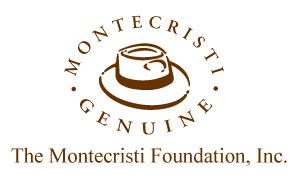
Thank you for reading about the programs, activities, and intentions of The Montecristi Foundation, Inc. We are sincerely trying to do the best we know how, and can pay for, to support the art and the artists of Montecristi. We welcome your input and we’re grateful for your help.
Web work by
Pipsqueak Productions, LLC
Text and photos © 1988-2011, B. Brent Black. All rights reserved.
